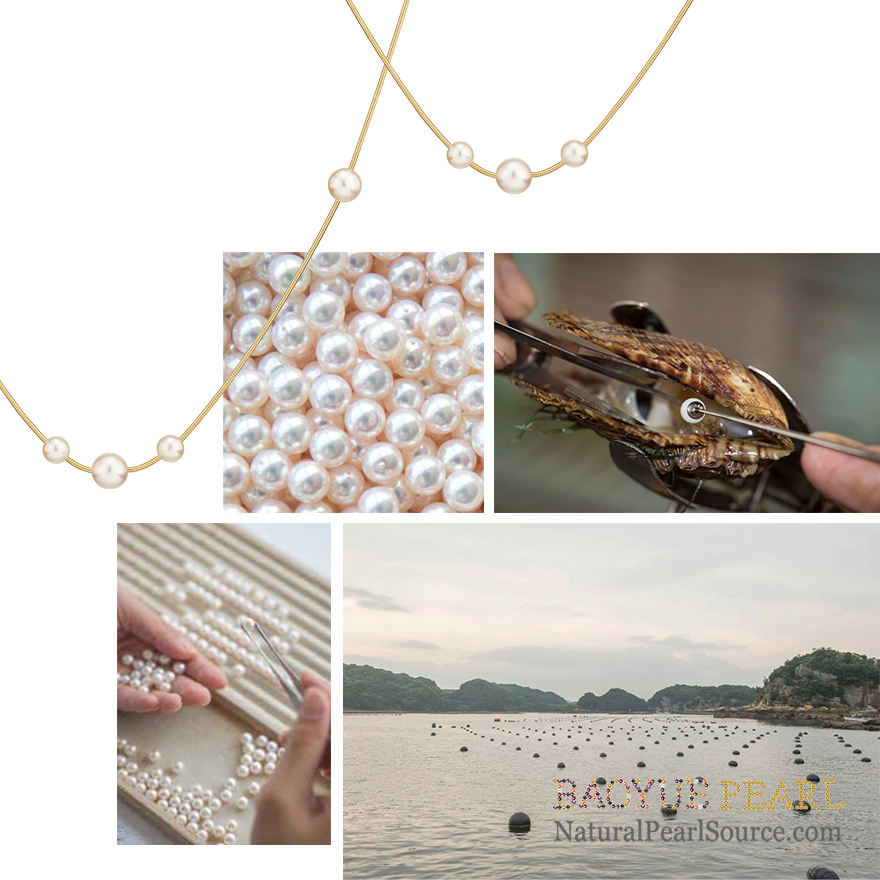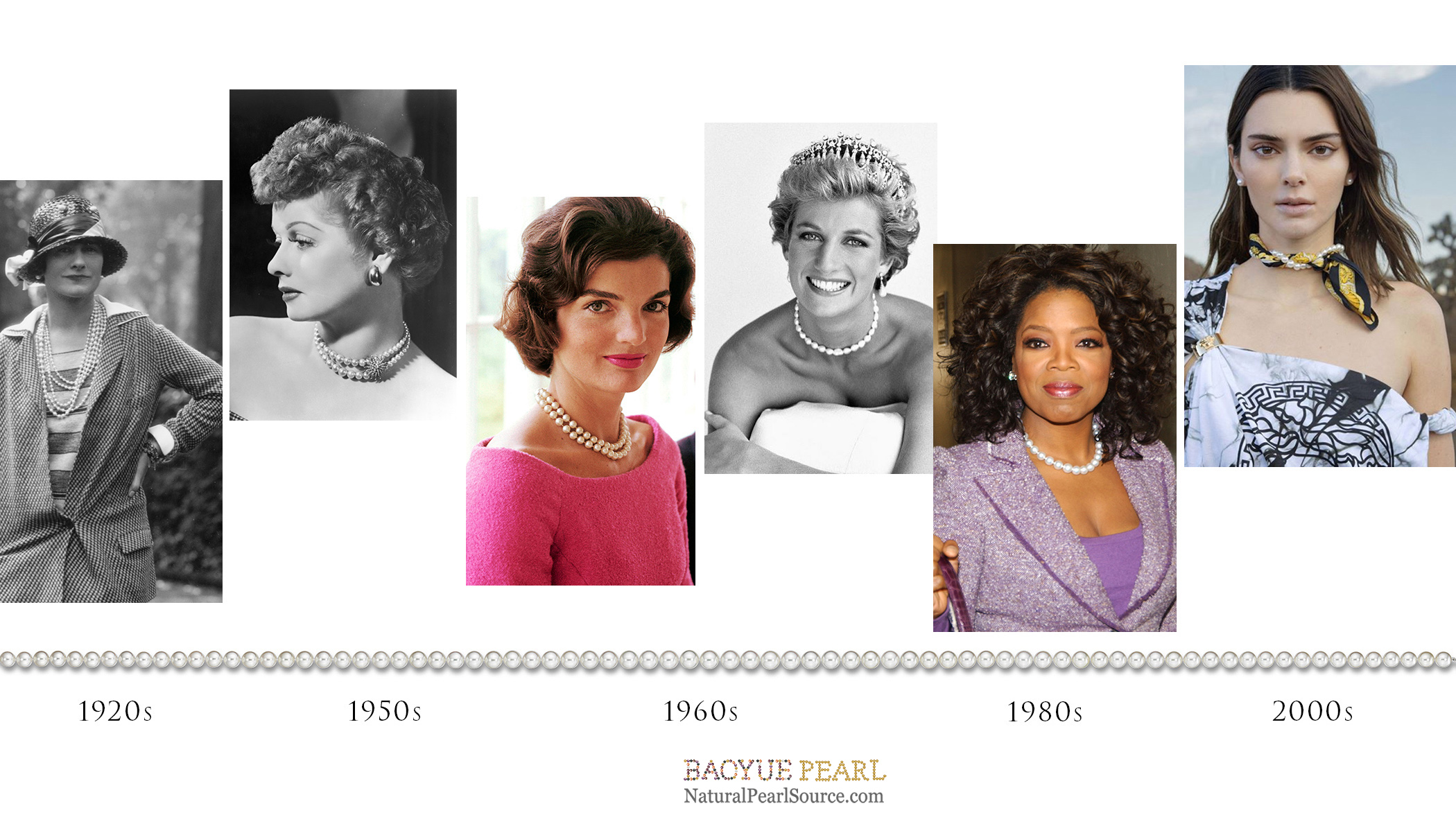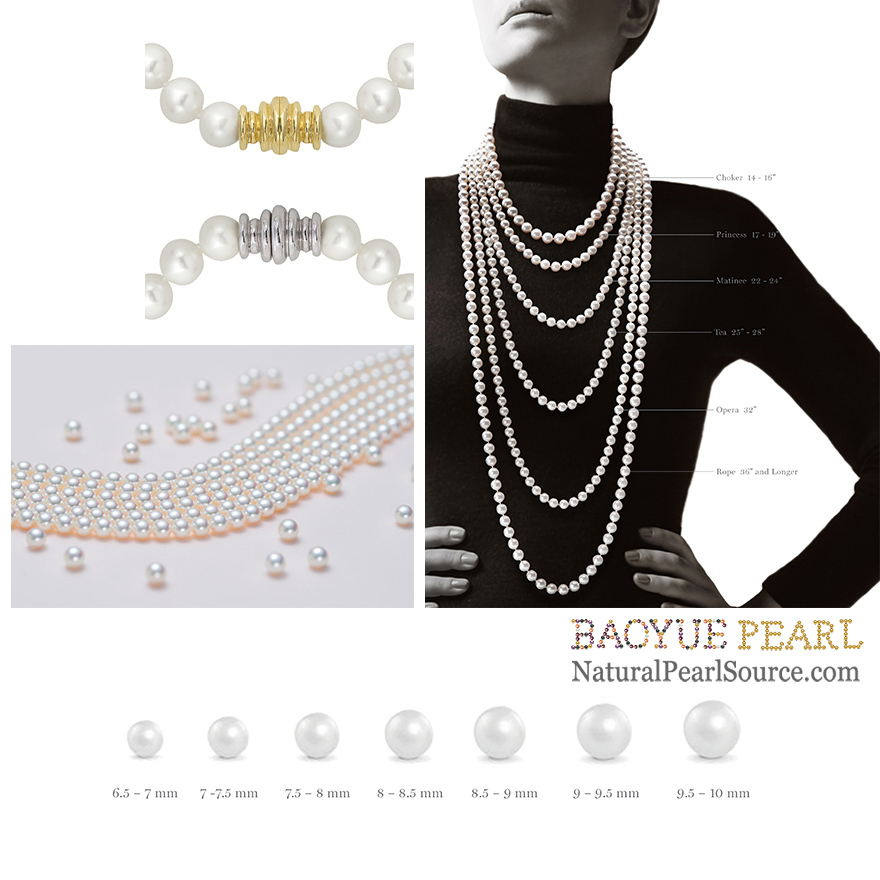 What Is An Akoya Pearl? And Why Are Akoya Pearls So Special?
What Is An Akoya Pearl? And Why Are Akoya Pearls So Special?
What is an Akoya Pearl and what makes Akoyas special? With the fashion world embracing pearls like never before, there is quite a buzz about pearls these days, prompting Vogue to ask earlier this year, “Are Pearls the New Diamonds?” With the pristine white wonders of mother nature showing up on runways, red carpets and IG feeds, everyone is talking pearls. And we do mean everyone – not just the ladies. This gender fluid gem has captured the limelight with both male and female celebrities, as fashion houses turn to pearls as a powerful symbol of status and sophistication.
Often this exciting pearl fashion revolution features the beautiful and classic Akoya Pearl. What is it? And what are the elements to look for when buying Akoya Cultured Pearls?
THE SCIENCE – Akoya Pearl Facts

Akoya Oyster, Japanese Pearl Farm, Hand Sorting Akoya Pearls, Loose Akoya Pearls with High Luster
Akoya cultured pearls form in the Pinctada Fucata oyster. These oysters are thriving in the hidden bays off the coast of Japan in the cold saltwater of the Pacific Ocean. All Assael Akoya pearls come from Japan. These pearls are harvested in the colder months from December to March and produce pearls with the highest thickness of nacre. (For more information about nacre, click here.) The highest quality Akoya Pearls grow in the ocean up to about two years to allow sufficient time for the pearl to form with thick nacre and wonderful luster.
The term “cultured pearl” really just means that a human being started the natural process of pearl formation. It is somewhat similar to artificial insemination. A nucleus gets inserted into the soft mantle tissue of an oyster by a highly trained pearl technician, and then Mother Nature takes over. The pearl forms around the nucleus in its natural process inside the oyster as it lives in the ocean. For more information on how pearls are formed, click here.
The Pinctada Fucata oyster is the smallest of the pearl-producing oysters, measuring about 3 to 5 inches in diameter. It, therefore, produces smaller pearls than the oysters that produce South Seas and Tahitian Pearls. Akoya Pearls generally range in size between 3 to 9mm, with the occasional rare 10 – 10.5mm sizes. The Akoya pearl is known for its superb luster and its perfectly round shape. Akoyas also have a beautiful color consistency, making them often the pearl of choice for a woman’s first strand of pearls.
HISTORY & NOMENCLATURE – Why Is It Called an Akoya Pearl?

Timeline of Pearls in Fashion History – Pearls have never been out of style. L to R – Coco Chanel, Lucille Ball, Jacqueline Kennedy Onassis, Princess Diana, Oprah Winfrey, Kendall Jenner in Versace scarf with pearls in Vogue (March 2020)
The Pinctada Fucata oyster mentioned above is more commonly referred to as the Akoya oyster. Because these pearls are formed in the Akoya oyster, the pearls are called Akoya pearls.
Akoyas were the first pearls ever to be cultivated. In 1893, a Japanese man developed a scientific process for cultivating pearls inside the Akoya oyster. At first, very few of these pearls made their way to Europe and even less to the United States. By the mid 20th Century, Assael had started distributing Akoya Pearls in America.
Cultured pearls revolutionized the world of fine jewelry, making pearls more readily available to women of all types. Before cultured pearls, only natural pearls had been available, so the supply was severely limited and often reserved for royalty. With cultured pearls becoming available to the general public, the fashion worlds in New York, Paris and Milan took note.
In the 1920s, Coco Chanel made Akoya pearl strands a must-have accessory for debutantes and socialites throughout Europe, affirming that “a woman needs ropes and ropes of pearls.” In the 1940s, U.S. soldiers returning home from World War II brought back strands of Akoya pearls for their wives and girlfriends, creating a craze for Akoyas in America, too. These perfectly round pearls with incomparable luster became a staple accessory to almost every outfit.
In the 1960s, “Jackie O” (Jacqueline Kennedy Onassis) made pearls synonymous with sophistication and class. In the ‘80s, Princess Diana’s fairytale love affair with pearls turned them into a beloved jewel in every woman’s wardrobe. More recently, formidable women of all ages from Oprah and Kamala Harris to Gigi Hadid and Kendall Jenner have used Akoyas and/or South Seas as ‘power pearls’ to convey a uniquely feminine aspect of power – that women can be soft and beautiful while also maintaining incredible strength.
MAGNIFICENCE – What To Look For When Buying Akoya Pearls?

Akoya Pearl Size Chart, Strands and Loose Akoya Pearls
According to the Gemological Association of America (GIA), “Akoya cultured pearls are the most familiar type of saltwater cultured pearls to most people in the U.S. and other western markets.” Akoya pearls are typically the first pearl strand a woman receives or the first pair of pearl earrings with which she starts her pearl collection. When buying Akoya pearls, be sure to examine the following hallmarks of value.
LUSTER
The Akoya is a truly classic pearl. It is known for its incredibly high luster. The higher the luster, the more valuable the pearl. So, when shopping for Akoya pearls, be sure to try the pearls on. See how they look on your skin. The beautiful glow of Akoya pearls will reflect that shine onto your skin and bring a beautiful radiance to your face.
SURFACE COMPLEXION
Akoya pearls also have very clean, smooth complexions. Look for pearls that are blemish free, allowing the full reflection of light.
COLOR
Akoya cultured pearls come in various shades of white to white-pink. Select the color that looks best with your skin. Again, remember to try the pearls on. Color is a purely personal preference. The pinkish white hues can be very flattering. Also, think about your wardrobe – if you wear a lot of black or black and white combinations, you might prefer a whiter Akoya pearl strand. Pure white strands are rarer and can be difficult to find.
SIZE
Choose a size of Akoya pearl in proportion to your facial features. If you have a petite face with small eyes and nose, you might look best in a smaller millimeter size of Akoya pearls like a graduated strand between 5 to 8mm. If you have an oval face shape and wear longer hair, you may need a larger pearl to command attention – like an 7 or 9mm.
SHAPE
Akoya Pearls are also prized for their perfectly round to near-round shapes. Compare various strands side by side to see how perfectly round the pearls are and how much luster they have. Perfectly round pearls have higher value.
STRINGING & CLASPS
When shopping for Akoya Pearls, the silk string should always match the color of the pearls and not distract the eye. You can also examine the knots in between the pearls to note how sturdy they are. Lastly, be sure to study the clasp. You will want to ensure that the clasp is secure and comfortable, as well as beautiful. Necklaces tend to move on the neck, so you will not want to keep turning the clasp to the back. Also, make sure you can open and close the clasp yourself.
Akoya pearls will certainly become a treasured part of your fine jewelry wardrobe, together with your favorite strand of even more distinctive South Sea Pearls. The luster of Akoya Pearls is remarkable and will make even your darkest days a little brighter. Assael is proud to offer a selection of the finest Akoya pearls available in the world, to ensure that every woman who wears them will shine in their gorgeous glow. Discover some beautiful Akoya pearl designs here.
If you have any question about pearl knowledges, Please come in BAOYUE Pearl Education page to read relevant articles, maybe you can get some answers, the link: BAOYUE Pearl Education . or leave a message to us, we will reply you within 24 hours.


 WhatsApp Code
WhatsApp Code